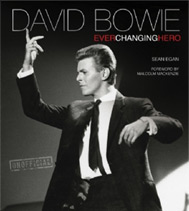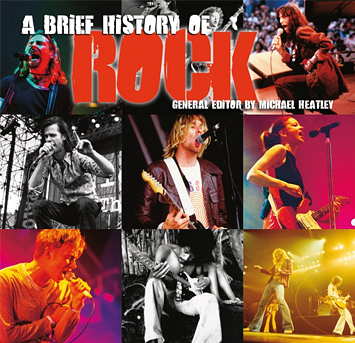With his work as a studio player and as a prolific solo and guest artist, Larry Carlton (b. 1948) has long been known as a guitarist’s guitarist. Carlton has won three Grammys for his performances and compositions. Carlton started learning to play guitar when he was six years old. He warmed to jazz in high school and was influenced by ...
Larry Coryell (b. 1943), a father of jazz-rock fusion, has recorded more than 70 albums over the past 35 years. Born in Galveston, Texas, Coryell tried his hand at a number of instruments before settling on the guitar. Chet Atkins, Chuck Berry and Wes Montgomery were major influences. As a child Coryell studied piano, switching to ...
(Guitar, b. 1943) Guitarist Larry Coryell got his start in New York with Chico Hamilton. He was a trailblazer of both free jazz and jazz-rock fusion in groups such as the Free Spirits – with saxophonist Jim Pepper and drummer Bob Moses – and in vibist Gary Burton’s band. A remarkable technician, Coryell also ventured into free-jazz territory with ...
(Vocals, guitar, b. 1947) Not many men could have replaced Carter Stanley after his death in 1966, but Larry Sparks had the high, lonesome edge, the personal intimacy and the songwriting skills to do so. He had been a harmony singer in The Stanley Brothers since 1964, and became the lead singer of The Clinch ...
Indie guitarist and producer Bernard Butler (b. 1970) was born in Tottenham, London. After learning violin as a child, he took up guitar at the age of 14, inspired by Johnny Marr, learning Smiths’ guitar parts by watching the band play live. He was also influenced by Bernard Sumner and Aztec Camera’s Roddy Frame. After replying to ...
Although his band of high-school buddies achieved international fame under the name Toto, Steve Lukather (b. 1957), session guitarist extraordinaire, has had to struggle under the same suspicion under which his bandmates have toiled: that the whole may add up to less than the sum of its parts. For Toto, despite achieving worldwide fame with singles like ‘Rosanna’ ...
Slick, ‘radio-friendly’ smooth jazz emerged in the 1970s, and it has continued to evolve ever since. The most artful examples can make for rewarding listening, while blander compositions can be recognized by any combination of musical clichés: light funk grooves, jazz chords, slapped bass lines, corny horn accompaniments and pedicitable solos. The style has drawn ...
By definition, a contemporary era defies summary. No one living in it has the conclusive perspective to discern the prevailing character of our times, even though we all know what we’re going through, and can hear what we hear. The reductive view is: Americans, after a burst stock-market bubble and terrorist attacks, live in uncertainty, ...
A small free-reed instrument, the harmonica, or mouth organ, is placed between the lips and moved to and fro to reach the rows of channels which house vibrating reeds, played by blowing into it. The arrival of the Chinese sheng in Europe in the eighteenth century encouraged a great deal of experimentation with free-reed instruments. In 1821 ...
Unlike rock music, electronic music is made partly or wholly using electronic equipment – tape machines, synthesizers, keyboards, sequencers, drum machines and computer programmes. Its origins can be found in the middle of the nineteenth century, when many of electronic music’s theories and processes were conceived. In 1863 German scientist Hermann Ludwig Ferdinand von Helmholtz ...
Rock, jazz, soul; each of these genres, while containing a multiplicity of various offshoots, is defined by some kind of unifying theme. But this miscellaneous section, as any record collector will know, is where everything else ends up. Most of the styles within this ‘genre’ have little in common save the fact that they do ...
(Guitar, b. 1966) A French gypsy, Lagrene was hailed as Django Reinhardt’s heir upon the release of his first album at the age of 13. He has performed gypsy jazz in the company of swing veterans Benny Carter, Benny Goodman and Stéphane Grappelli, but has also developed a personal, fusion-oriented style and mixes both approaches in ...
(Guitar, vocals, 1945–81) The man responsible for popularizing reggae worldwide, Bob Marley’s career began in 1963 in the original Wailers, a six-piece vocal group, later slimmed to a trio, operating out of Kingston, Jamaica and enjoying great success locally. In 1969, Marley worked with producer Lee ‘Scratch’ Perry, who introduced him to ...
(Vocal/instrumental group, 1966–present) Comprising Bob Hite (vocals, harmonica), Al Wilson (guitar, harmonica, vocals), Henry Vestine (guitar), Larry Taylor (bass) and Fito De La Perra (drums), this Los Angeles band’s heyday was between 1966–70, when covers of the Memphis Jug Band’s ‘On The Road Again’ and Henry Thomas’s ‘Goin’ Up The Country’ propelled them up the charts. ...
Charlie Christian (1916–42) pushed guitar to the forefront of the big-band era, furthering the instrument’s evolution from a provider of acoustic accompaniment to an electrified foreground instrument that could pound out rhythm like a drum set or solo out front like a horn. His playing, in fact, was likened to jazz horn players who were leading the evolution ...
AUTHORITATIVE
An extensive music information resource, bringing together the talents and expertise of a wide range of editors and musicologists, including Stanley Sadie, Charles Wilson, Paul Du Noyer, Tony Byworth, Bob Allen, Howard Mandel, Cliff Douse, William Schafer, John Wilson...
CURATED
Classical, Rock, Blues, Jazz, Country and more. Flame Tree has been making encyclopaedias and guides about music for over 20 years. Now Flame Tree Pro brings together a huge canon of carefully curated information on genres, styles, artists and instruments. It's a perfect tool for study, and entertaining too, a great companion to our music books.

David Bowie
Fantastic new, unofficial biography covers
his life, music, art and movies, with a
sweep of incredible photographs.


